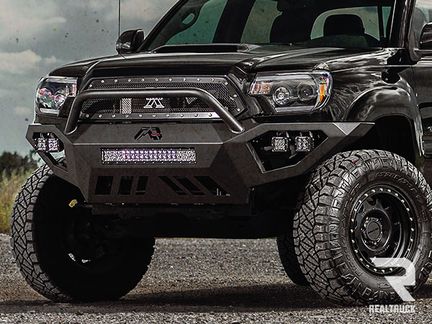Free Shipping on Orders Over $100
What Is Rack and Pinion Steering?
Updated on Jan 22, 2025
Rack and pinion steering is relatively uncommon in the heavy-duty, four-wheel-drive vehicle market. Solid-axle vehicles—like Jeep® Wranglers, HD RAMs, and Ford Super Duty pickups—rely on the aging yet reliable recirculating ball technology. However, more and more modern vehicles are adopting independent front suspension systems and rack and pinion steering for their numerous drivability benefits.
This being said, what is rack and pinion steering? How does it work, and what makes it such a popular choice? We’re diving into all these questions and more in this RealSource feature. Get ready for a crash course on the rack and pinion steering system, brought to you by RealTruck.
How Does Rack and Pinion Steering Work?
So, what is rack and pinion steering, and how does it work?
Rack and pinion steering, a popular technology used throughout the automotive market, is known for its simplicity and reliability. It’s a common feature in vehicles from compact cars to full-size trucks, all of which have independent front suspension. Due to its straightforward design and fewer components, rack and pinion steering is less prone to breakage, boosting its reliability. On IFS applications, this steering technology operates exceptionally well.
Rack and pinion steering comprises several components, including the pinion gear, rack, a hydraulic pump (or electric motor), and tie-rods. The steering rack is a hydraulically (or electronically) assisted toothed bar that meshes with a pinion gear fixed to the steering shaft. As the driver turns the steering wheel, the pinion gear’s teeth rotate against the teeth of the steering rack, shifting the bar linearly from side to side.
Steering rack movement is transferred to the steering knuckles via tie rods, which gives the driver effective control over the orientation of the two front wheels.
Recirculating Ball vs. Rack and Pinion
When comparing steering systems, the two most commonly encountered include rack and pinion steering and traditional recirculating ball systems.
Recirculating ball systems are more complex, featuring a frame-mounted gearbox and extensive steering linkage. While recirculating ball systems aren’t known for their sporty steering feel or responsiveness—due to their multiple moving parts and increased friction—they’re more robust than comparable rack and pinion systems, making them the preferred option for heavy-duty vehicles.
What Are the Benefits of Rack and Pinion Steering?
Rack and pinion steering offers several advantages over conventional recirculating ball systems, including low overall weight, relative simplicity, and unmatched responsiveness.
This straightforward steering technology requires little more than a pinion gear and steering rack. Fewer components equals less opportunity to break, boosting reliability. This simple design is also lightweight, which can significantly increase performance by reducing the load over the front axle.
From a performance perspective, rack and pinion steering is far more responsive than other technologies. These systems are direct because driver input must only pass through one gear set and a pair of tie rods before reaching the tires, resulting in a more dynamic and responsive steering feel. For this reason, virtually all performance vehicles utilize rack and pinion steering, offering an exciting driving experience.
What Are the Downsides of Rack and Pinion Steering?
Now, onto the less-than-fun stuff—shortcomings and problems.
Rack-and-pinion steering is frequently omitted from heavy-duty applications, as it’s notoriously weaker than tried-and-true recirculating ball systems. Typical failure points include leaking seals and worn teeth, which can result in significant drivability issues. Unfortunately, most steering racks are also difficult to access and expensive to replace.
Aside from their weaker design, steering racks also offer limited travel. Whereas recirculating ball systems can turn indefinitely, rack and pinon systems are limited by how many teeth can be physically machined into the steering rack. In most cases, steering racks are limited to approximately 3.25 inches of travel.
While these factors aren’t dealbreakers to typical commuters, hardcore wheelers or motorsports enthusiasts may be swayed in one direction based on performance and reliability demands.
Rack and Pinion Steering Applications
So, which applications utilize rack and pinion steering? The answer may surprise you. Rack and pinion steering can be found on virtually every passenger car, SUV, CUV, and even compact, midsize, and half-ton pickup trucks. Some of RealTruck’s most popular vehicles utilize rack and pinion steering, including:
Chevy Silverado/GMC Sierra (1500 and HD)
The rack and pinion steering system is a practical, responsive, and reliable addition to the automotive market. While traditional recirculating ball systems may offer superior durability in select applications, rack and pinion steering is undoubtedly effective and the most popular steering technology on the road today.
Shop Now
RealTruck is your home for the best products to outfit your build for unforgettable adventures.
Truck Parts | Steering Upgrades | Wheels & Tires | Suspension Parts | Drivetrain Parts
See Recent RealSource Articles Here...
- …
Join over 2 million RealTruck people
Get exclusive savings, insider information, and the latest RealTruck articles sent straight to your inbox.



